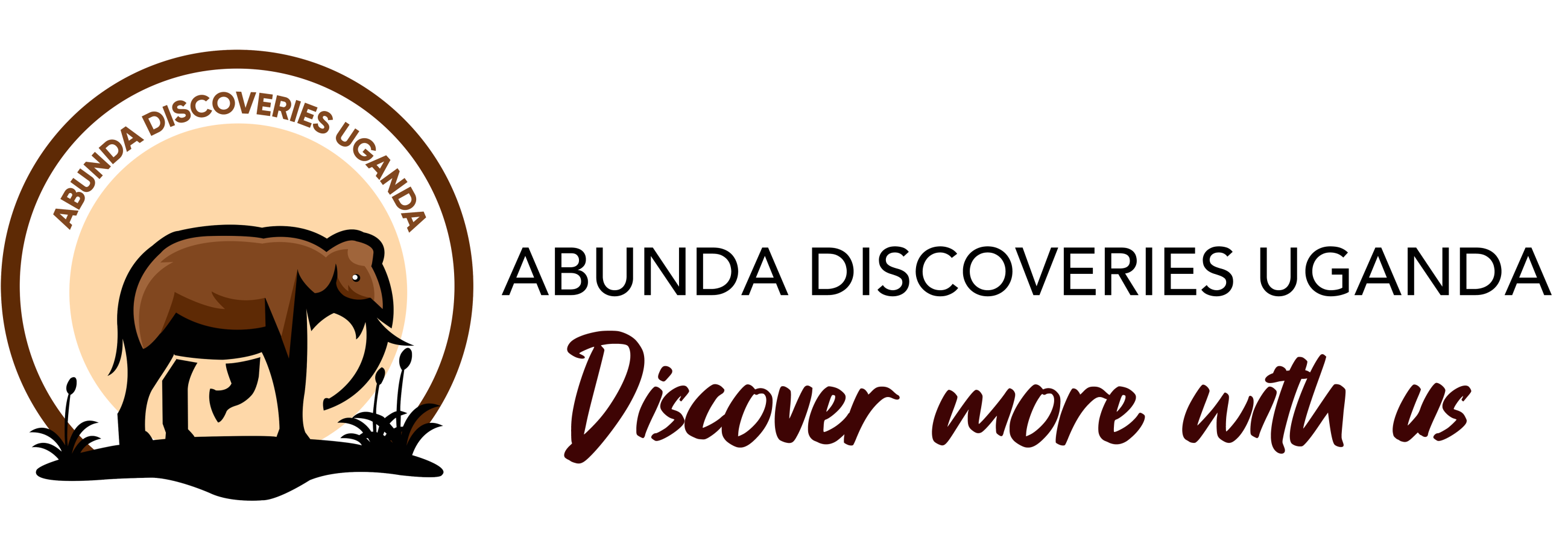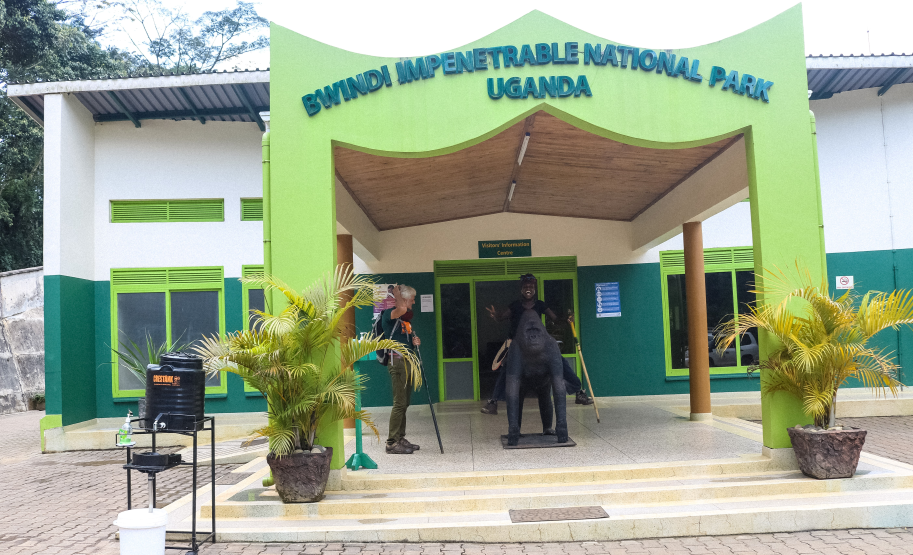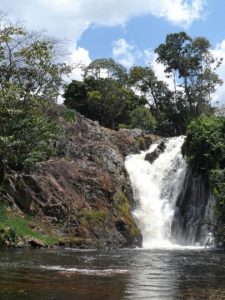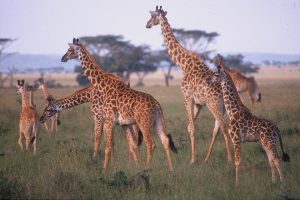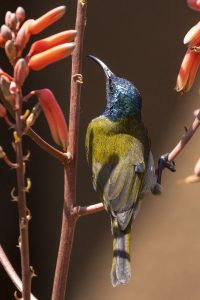How big is Bwindi lmpenetrable National Park?
One of the few remaining locations where endangered mountain gorillas can be observed in their native environment is the Bwindi Impenetrable Forest. Many endangered species can be found in this ancient forest, which is a treasure trove of diversity. Most travelers always ask How big is Bwindi lmpenetrable National Park? . The large, forested mountains of Bwindi Impenetrable National Park are renowned for their dense flora, dense mists, streams, and dew, as well as their endangered mountain gorillas and vibrant, noisy birds.
Where is Bwindi Forest Located?
Situated in the southwest of Uganda and share a border with Democratic Republic of Congo. It is a well-known tourist attraction because to its renowned gorilla trekking. During a gorilla trek, you follow a guide through the jungle to locate and spend an hour with a troop of mountain gorillas. It’s a very unique experience that not many people get to have. And you’re practically never the same after it.
What is Bwindi National Park famous for?
Bwindi Impenetrable National Park is renowned for being a home for mountain gorillas, offering visitors the opportunity to trek through the dense forest and observe these endangered primates in their natural habitat, with over half of the world’s population residing within its boundaries. It was founded in 1991 primarily with the purpose of protecting the species.
Bwindi Impenetrable Forest is thought to be a small part of a very large forest that once covered much of western Uganda, Rwanda, Burundi, and the eastern Democratic Republic of the Congo (DRC). Because of its remarkable diversity, which includes many endemics of the Albertine Rift, Bwindi is the most important area for species in Uganda.
The size of Bwindi Forest
Bwindi Impenetrable National Park is the 3rd smallest national park in Uganda. The park covers 32,000 ha and composed of 321km. it’s known for its biodiversity, with more than 160 species of trees and over 100 species of ferns. Despite its relatively small size, Bwindi is crucial of its large population of critically endangered mountain gorillas. The vast size of Bwindi National Park is mainly comprised of lowlands.
Bwindi National Park was designated in 1991 after combining the Impenetrable Central Forest Reserve, Rwenzori Mountains Reserve and Mgahinga Gorilla reserve to a size of 300 square kilometers. Later more 10 square kilometers were added, later being a UNESCO World Heritage Site. Its management also changed to Uganda Wildlife Authority that still manages it until today.
How do I get to Bwindi Impenetrable National Park?
Entebbe International Airport, which is located just outside of Kampala, is one airport from which to reach Bwindi National Park. To get to Bwindi National Park from there, you have three options:
- Take a plane to Kihihi Airport, which is north of Bwindi, then head south.
- Take a plane to Kisoro Airport, which is located south of Bwindi, then head straight north.
It takes eighty minutes to fly from Entebbe to Kihihi. From there, it’s about an 80-minute journey south to the Buhoma gate of the park. An hour and fifty minutes is the duration of the flight from Entebbe to Kisoro. Rushaga Gorilla Camp in the southern region of Bwindi is more than an hour’s drive north from there.
It takes eight to ten hours to drive the 463-kilometer southwest road from Kampala to Bwindi. As we do in our gorilla trekking program, we advise you to see some additional attractions if you decide to drive. Dividing the journey into two days and making a stop at Lake Bunyonyi or Lake Mburo National Park is a fantastic option.
Best attractions in Bwindi Impenetrable National Park
Nature Walks
Hiking trails in Bwindi Impenetrable National Park are also prominent attractions in the park. And these trails lead to numerous parts of the park and attractions, while using them you get to encounter many mysteries of the park. Hiking and nature expeditions in the park include; River lvi trail, waterfall trail, Habinyanja trail, Kashasha river trail, Bamboo trail and Muzabajiro trail.
Visiting the Batwa pygmies
When Bwindi Impenetrable National Park was designated as a protected area, the Batwa Pygmy people, who had long lived in the forest, were forcibly relocated to the park’s periphery. The Batwa people, who are considered to be the guardians of the forest, are hunter-gatherers who mostly rely on capturing wild animals and gathering fruits. They continue to live according to their traditional ways even now. You will visit the Batwa community for a cultural interaction when you explore Bwindi Impenetrable National Park. Where you will see these incredible people going about their daily lives in a way that is centuries old.
Birding
Bwindi Impenetrable National Park boosts a variety of bird species. Mostly water and forest bird species, Bwindi is a perfect sport for montane- forest bird watching in Africa. Also a home to over 350 bird species. Bird species that are sighted in the thick forests of Bwindi include; African wood owl, Tit Hylia, fly catcher, Dusky Twin spot, Black bee- eater and many others.
Mountain Gorilla
Mountain gorilla is the top attraction in Bwindi Impenetrable National Park. Bwindi is a prominent home to many mountain gorilla individuals estimated to be 400 individuals. Which habit in different sectors of the park. These sectors situated in different regions of the park are where mountain gorillas live and in these sectors you find various exciting gorilla families.
Best time to visit Bwindi Impenetrable National Park
Dry Seasons (December–February & June–August):
- Ideal for Trekking with Gorillas: There are fewer insects and the trails are easier to follow and less muddy.
- More Sunny Days: There’s a greater likelihood of sunlight and clear sky. Which is perfect for taking pictures and taking in the views.
- Peak Season: Because these months are regarded as peak season, bigger crowds and higher prices are to be expected.
Wet Seasons (October–November & March–May):
- Lush Greenery: You may spot more migratory birds in the lush, verdant forests.
- Possible Difficulties: There may be more mosquitoes and the trails may be muddy and slick.
- Reduced Crowds: Because these months are regarded as the off-peak period. There will probably be fewer visitors and perhaps cheaper costs.
How big is Bwindi lmpenetrable National Park?
